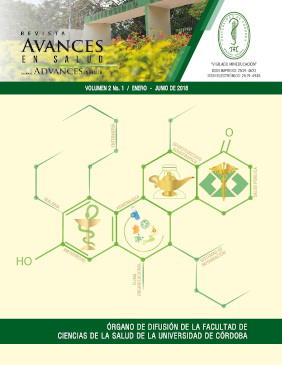Show authors biography
Objective. Determine the knowledge of and attitude to ward the management of solid house hold waste that the inhabitants of social housing have in the municipality of Monteria. Materials and methods. This was a descriptive, quantitative, and cross-sectional study with information collected through the application of a question naire, which evaluated aspects related to the knowledge of and attitude of people toward the man agement of solid house hold waste. The study was carried out in 24 apartment towers of social-interes thousing. Arandom sample of 175 apartments was chosen, and a questionn aire was administered to the heads of house holds forthe collection of the information, which was collected inphysical formand process edin SPSS. Results. The finding sindicated that 68% of heads of households have knowledge of somere cycling techniques; 60% reported that they do not separate the waste; 70% of them did not separate technological waste; 65.7 % of the respondents were not cleara bout what is called solid waste; and 63.5% of them did not know the color code that allows an adequate classification ofwaste. Conclusion. In the home sunder study, it is necessary to implement strategies to improve the knowledge of the inhabitants that contribute to an adequate separation in the source of the household solid waste to favor the reduction in the production of garbage and the development of anawareness of the care for the environment.
Article visits 1409 | PDF visits
Downloads
- Organización Panamericana de la Salud y Ministerio de Medio Ambiente de Colombia. Análisis Sectorial de Residuos Sólidos en Colombia. Programa de Gestión Urbana/Ministerio de Salud de Colombia. Abril, 1996
- Escamirosa M, Lorenzo F, Carpio Penagos, Carlos Uriel del, Castañeda Nodasco, Gabriel. Manejo de los residuos sólidos domiciliarios en la ciudad de Tuxtla Gutierrez Chiapas [Internet]. México, D.F.: Plaza y Valdés, S.A. de C.V.; 2001.
- Flores López, Jorge Luis. Proyecto L1C2-120 FPA: “Implementación del sistema de ma- nejo integral de residuos sólidos urbanos en el distrito de Las Lomas [Internet]. Lima: B - Municipalidad Distrital de Las Lomas; 2012.
- Ministerio de Vivienda, Ciudad y Territorio. Marco de gestión ambiental y social. Colombia, Agosto de 2014. Disponible en http://www.minvivienda.gov.co/ Residuos%20Solidos/Marco%20de%20 Gesti%C3%B3n%20Ambiental%20y%20 Social%202014.pdf
- Euformación Consultores S L. editor. Recogida y transporte de residuos urbanos o municipales (2a. ed.) [Internet]. Andalucía: IC Editorial; 2017.
- Sadhwani Alonso, José Jaime. Gestión y tratamiento de residuos I [Internet]. Las Palmas de Gran Canaria: Universidad de Las Palmas de Gran Canaria. Servicio de Publicaciones y Difusión Científica; 2015.
- Decreto 2981 de 2013 Ministerio de Vivienda Ciudad y Territorio, Republica de Colombia. Disponible en http://wsp.presidencia.gov.co/ Normativa/Decretos/2013/Documents/ DICIEMBRE/20/DECRETO%202981%20 DEL%2020%20DE%20DICIEMBRE%20 DE%202013.pdf
- Terraza H. Manejo de Residuos Sólidos Lineamientos para un Servicio Integral, Sustentable e Inclusivo. Banco Inter- Americano de Desarrollo Departamento de Infraestructura y Medio Ambiente NOTA TECNICA No. IDB-TN-101 disponible en https://publications.iadb.org/bitstream/ handle/11319/2850/Manejo%20 de%20Residuos%20S%C3%B3lidos.. pdf?sequence=1
- Forero S, Ochoa M. Situación de la disposición final de residuos sólidos en Colombia – diagnostico, 2009. Disponible en http://www.superservicios.gov.co/ content/download/1259/16220
- Departamento Administrativo Nacional de Estadística (DANE) (2015): Información general. Disponible en: www.dane.gov.co
- Ministerio del medio ambiente vivienda y desarrollo territorial. Guías de Asistencia Técnica para Vivienda de Interés Social. Colombia. Disponible en http://www. minvivienda.gov.co/Documents/guia_ asis_tec_vis_1.pdf
- Banco Inter-Americano de Desarrollo Departamento de Infraestructura y Medio Ambiente. Nota técnica No. IDB-TN-101. Disponible en https://publications. iadb.org/bitstream/handle/11319/2850/ Manejo%20de%20Residuos%20 S%C3%B3lidos..pdf?sequence=1
- Jaramillo G, Zapata L. aprovechamiento de los residuos sólidos orgánicos en Colombia. Universidad de Antioquía, 2008.
- Olaya J, Ippolito K, Moreno G, González V, Klinger R, Parra CM, & Marmolejo L. (2013). Asociaciones entre la composición socioeconómica familiar y la generación urbana de residuos sólidos domiciliarios/ associations between familial socioeconomic composition and urban residential solid waste generation. Revista EIA, 10(20), 127-137. Retrievedfromhttps://ezproxyucor.unicordoba.edu.co:218/docview/1498236340?accountid=137088
- Banco Interamericano de Desarrollo y de la Organización Panamericana de la Salud. Situación del Manejo de los Residuos Sólidos Municipales en América Latina y el Caribe, ALC, Julio, 1997.
- Pontificia Universidad Católica de Valparaíso. Facultad de Ingeniería. Informe final. Estudio caracterización de residuos sólidos domiciliarios en la región metropolitana. Valparaíso, Marzo 2006.
- Mercurio E. Reciclaje de residuos domiciliarios 2014, septiembre 14. El Mercurio Retrieved from https:// ezproxyucor.unicordoba.edu.co:2186/docview/1562458180?accountid=137088
- Marmolejo Lf, Oviedo ÉR, Jaimes JC, & Torres P. Influencia de la separación en la fuente sobre el compostaje de residuos sólidos municipales 2010. Agronomía Colombiana, 28(2), 319-328. Retrieved from https:// ezproxyucor.unicordoba.edu.co:2186/docview/1677585160?accountid=137088.







